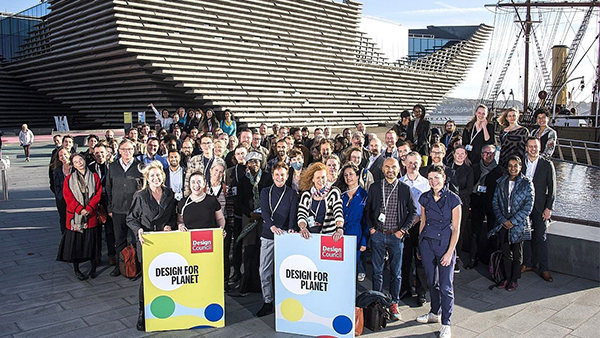In part one of this article, we discussed the need for greater collaboration to solve some of our most entrenched systemic challenges, and introduced the collective impact model. While collective impact may seem like a “codification of common sense” (to quote West London Zone’s CEO), in practice there are many complexities to navigate. We set out to explore what makes it work and what gets in the way.
So what will make collective impact work in the UK?
Many organisations around the world have begun to use collective impact as an answer to the established need for greater cross-sector collaboration. While there was a flurry of interest in the UK following the publication of the first collective impact article in the Stanford Social Innovation Review, examples of collaboration that use all five criteria of collective impact seem to be less apparent.
We conducted research with two collective impact projects in London (the Finance Innovation Lab and West London Zone) to explore what makes it work in the UK, and what gets in the way. We found five barriers and nine enablers.
Barriers of collective impact
- Existing services with established theories of change: in the UK (unlike the USA) many social services are already in place, and those services have established theories of change and an entrenched interest in maintaining the status quo.
- Time required to build relationships: collective impact is all about chemistry –it’s built and sustained on relationships, which take time and patience to develop (years), and time is a resource in very short supply.
- Ego and power dynamics: collaborative working requires working with other people who may be traditional competitors, so naturally there is some conflict over who gets to be in charge, who takes the credit and who own the risk.
- The political and cultural climate in the UK: the principle of market-based competition at the heart of neoliberal politics may mean that competition comes more naturally than collaboration to many.
- Lack of long-term and flexible funding: collective impact requires multi-year funding for general operational costs, linked to long-term and systemic ‘social impact’, which very few funding institutions are prepared to offer (yet).
Enablers of collective impact
- Understand the ideology and values driving the system: changing systems means challenging and changing the meta-narratives, values and ideologies that give the system oxygen.
- Stand between the margins and the mainstream: to change a system the most creative space is neither embedded within it nor completely outside it.
- Embrace conflict and contestation: both are natural and essential in order to move beyond the incremental innovations driven by unanimous consent and create more disruptive change.
- Find the ‘coalition of the willing’: work with individuals (rather than organisations) who buy into the shared goal and may be ‘unusual suspects’ - collective impact is a mindset and you have to go where the energy is to make it work.
- Use the context to create urgency for change: embrace and harness discontent with the status quo.
- Rethink assumptions about ego and power dynamics: this is one of the most commonly cited barriers, but it can be a self-fulfilling prophecy – conversely the energy generated by a shared purpose means participants will (in general) look beyond individual agendas.
- Lead by stepping back: while a charismatic champion is crucial, they must lead from behind and instead foreground the work/ideas of project participants combining both humility and strength.
- Locate the backbone in the third sector: the backbone organisation should be neutral and independent, so the third sector may be the best location for it.
- Follow a process instead of a tactical plan: collective impact is messy, iterative and emergent - the emphasis should be on the goal rather than the method or structure, allowing for continuous learning rather than a pre-set solution.
A fuller explanation of each barrier and enabler is available in our collective impact research paper.
Five things that will support collective impact in the UK
Shifting from isolated impact to collective impact will not happen organically, and it’s not merely a matter of encouraging more collaboration or public-private partnerships. Here are our suggested next steps.
- New backbones. The UK needs some new backbone organisations, starting with anyone who has a major piece of the puzzle and a desire to connect the dots. They must have collective impact in their DNA and sit somewhere between the margins and the mainstream. They could be one of two types – those that ‘coordinate’ and focus on changing individual circumstances in local areas (these generally follow the American model of collective impact) and those that ‘transform’ and focus on changing institutions and ideologies on a bigger scale.
- A shared understanding of collective impact across all sectors.This could be achieved through forums or conferences (such as the collective impact roundtable to be hosted by NESTA, West London Zone and Generation Change in February 2016) and will rely on sharing practical examples (both from within the UK and internationally).
- New funding models. As Collaborate highlighted in its funding ecology paper, we need a new approach where funding is provided to coalitions, with less prescription about process or outcome in order to address complex and entrenched problems that require a systems approach. Some models are already in development, for example Collective Impact Capital (a place-based collective impact fund), and West London Zone’s Collective Impact Bond.
- Shared learnings from the pioneers. We need an understanding of where collective impact (and other forms of effective collaboration) is already being applied, and networks that create a dialogue about what’s working well and not so well. Tool kits will help, and many have already been developed.
- New measurement systems and methodologies. Measurement systems are as much about determining needs and facilitating action-reflection learning as they are about collecting the evidence that collective impact works (or doesn’t work, and where adjustments in the approach are needed). New models are already being built specifically to capture the ‘impact’ in collective impact, see for example Results Scorecard.
Today we create our tomorrow
What is abundantly clear is that to avoid sleepwalking into a future without change we need to keep looking for approaches that work, building on learning from the past. This blog was written in a spirit of optimism with a belief that change is entirely possible.
In one sense, collective impact is both obvious and straightforward, but in practice collective impact work is complex and far from easy. Some of the barriers identified are not easily shifted. Achieving systems change is a long-term process, and collective impact practitioners must accept that they might not see results in their lifetime.
But that should not stop us from starting now. The will and passion to shape an alternative future already exists. Collectively, the future is very much in our hands, if we choose to act together. That may appear idealistic, but perhaps a small dose of idealism is exactly what’s required.
John Kania and Mark Kramer, the authors of the original collective impact article, suggest that: “while collective impact remains a messy and fragile process [and] many attempts will no doubt fail … even the attempt itself brings one important intangible benefit that is in short supply nowadays: hope. That alone may be purpose enough to embrace collective impact”.
Tara Anderson is Co-Founder and Director at The Dragonfly Collective, an international consultancy working with others to reduce inequality and create a more just world. Read the full research paper on collective impact here.
Related articles
-
A design revolution for the climate emergency
Joanna Choukeir
Joanna Choukeir on Design for Planet, the global gathering of designers during COP26, and the changes design must make.
-
US elections: the whole world is watching
Adanna Shallowe
The Caribbean’s experience shows how American policy affects us all.
-
The broader purpose of the environmental movement
Hila Chenzbraun Philipa Duthie
How can environmental movements tackle the climate crisis and social and racial injustice?




Be the first to write a comment
Comments
Please login to post a comment or reply
Don't have an account? Click here to register.